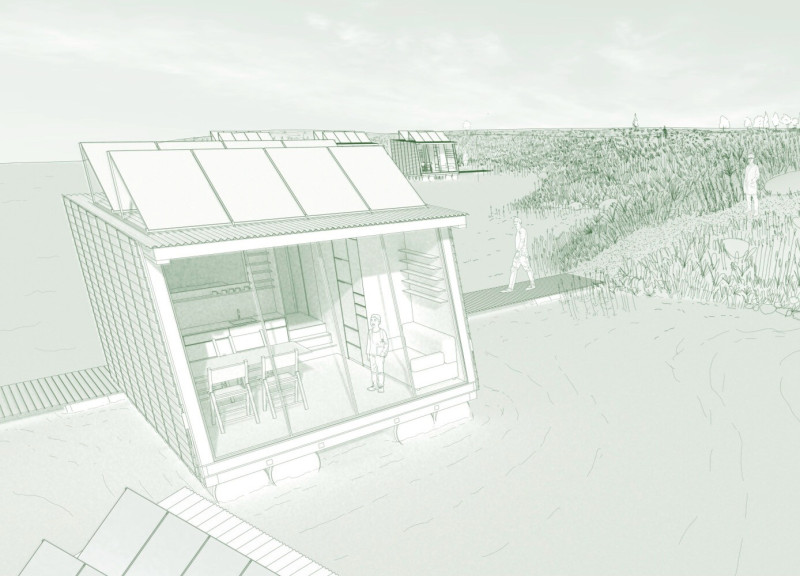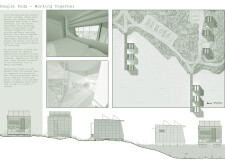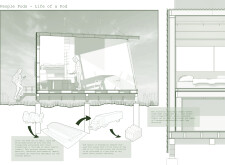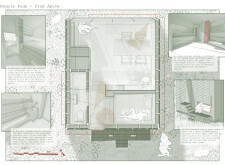5 key facts about this project
### Overview and Concept
The People Pods project presents a minimalist living solution that addresses sustainable development needs in various global regions. This initiative focuses on fostering community connections through shared living experiences, emphasizing communal spaces such as larger kitchens and living areas, despite the compact dimensions of the structures.
### Spatial Configuration and Materiality
Each pod is designed as a single-story structure with a compact footprint that integrates into rural landscapes. The linear form minimizes environmental impact while ensuring functionality within limited space. The construction employs sustainable materials, including timber for framing, corrugated metal for durability, and large glass panels that enhance natural light and outdoor connectivity. Local sourcing of materials further reduces transportation emissions and supports regional economies.
Strategically elevated on posts, each pod preserves the existing landscape and minimizes disruption to local ecosystems. This foundation design also simplifies deconstruction and mitigates long-term environmental effects. Additional sustainability features include roof-mounted solar panels for renewable energy, potential rainwater harvesting systems, and suggestions for green roofs to enhance insulation and local biodiversity.
### Functional Layout and Community Engagement
The interior design maximizes utility through an open-concept layout, promoting flexibility and comfort in living and sleeping areas. Multi-function spaces facilitate various uses, such as a combined storage and workspace provision. The layout also emphasizes a strong relationship with outdoor areas, featuring accessible storage for gardening tools or bikes, thus encouraging an active lifestyle and connection with nature.
Community-centric design elements, including shared kitchen and living spaces, are integral to the project, aiming to reduce isolation in modern living. The adaptable nature of the pods allows for responsiveness to differing site conditions and inhabitants' needs, ensuring that the design remains relevant and effective throughout its lifecycle.






















































